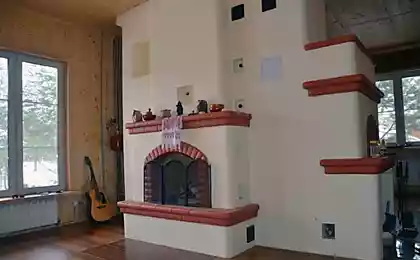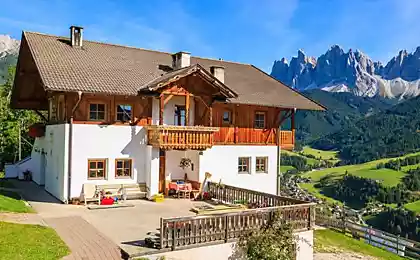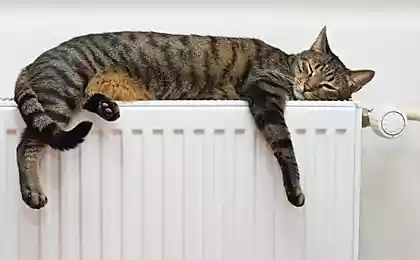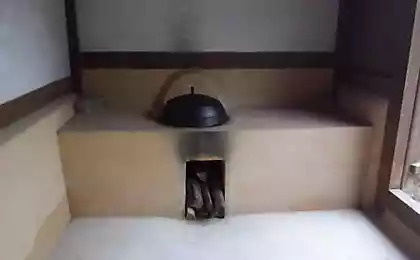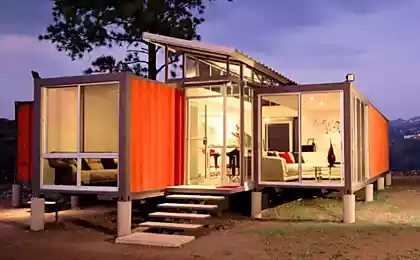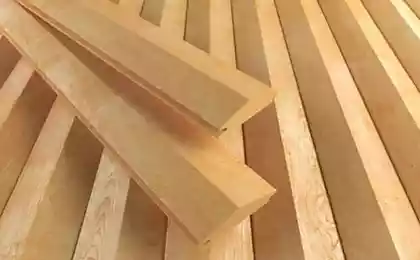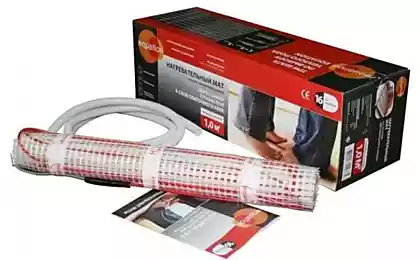691
Warm floor for a country house
Compared with the usual methods country heating furnace or radiator, the system warm floor is a lot of pluses. She:
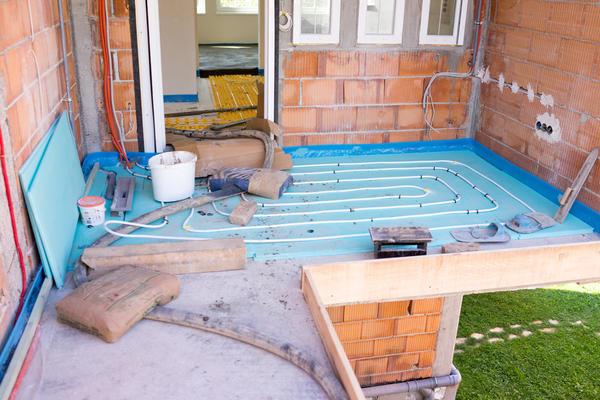
Overall this is a good solution for a country house. Let's look into its kinds and characteristics.
Why the need for a warm floor? In Russia in the discussion of different life issues taken to find out how these problems are solved in the West. Let we me turn to the highly developed parts of the Western world — Scandinavia, whose climate on the severity close to our. The Swedes, Finns and Norwegians almost half of houses under construction equip btraditional systems radiant heating (which is floor). But the Scandinavians do not suspect of the tendency to splurge, especially when it comes to energy and the cost of it.
Underfloor heating can be both auxiliary and main heating system. They are indispensable when you have to "compromise" with the batteries in the arrangement of furniture — for example, if the heating "harmony" does not put the city planned to place a wardrobe or a bed. In the kitchen they keep the flooring dry, saving it from excessive moisture, which leads to the formation of bacteria and mold. The same can be said of the bathroom with toilet, and entrance hall, where in rainy weather is wet from shoes and umbrellas.
A serious trump card Underfloor heating — previously unknown in suburban homes comfort level when around the house you can walk around barefoot without fear of catching cold.
What kind of parents would abandon a guaranteed peace of mind for their child that slaps around the house without socks and not sniffles then?
As the floor gets warm? Underfloor heating can be of three types:
electric, water, mix (this type is less common, and to consider it in detail we won't). 1. Electric floor heatingthe Main components of an electric version of the heating cable and thermostat control. The cable is mounted in cement-sand screed or directly beneath the floor tiles (or other coating).
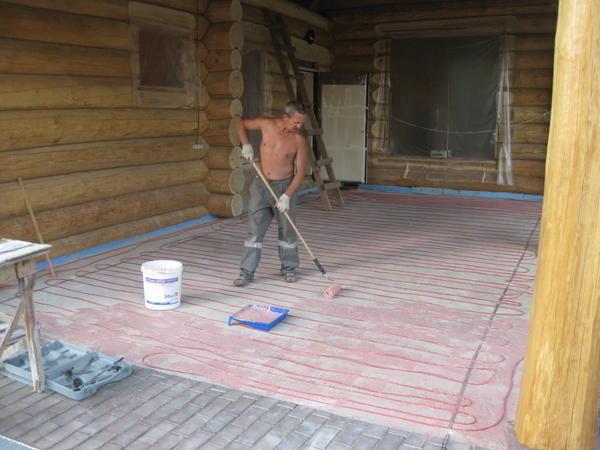
Thus, the entire array of sex turns into a radiant heater with a pleasant foot temperature by 2-3 °C above air temperature. It should be noted that the air is not too dry.
So, in the electrical circuit of Underfloor heating include:
Required element this heating thermostat with floor temperature sensor. After all, one of the major advantages of electricity in the ease of regulation. And warm electric floors, this opportunity is fully used.
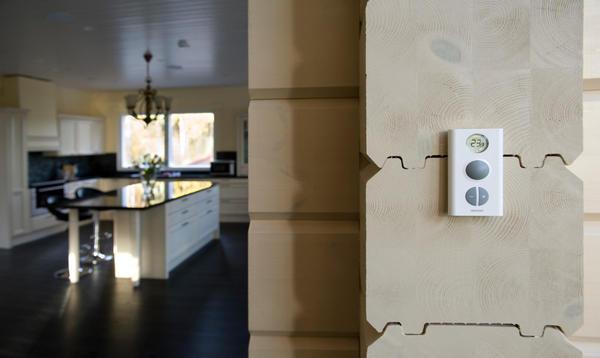
Here can be used as non-programmable thermostats, in which the desired temperature is set manually (in steps or continuously), and programmable, supporting and regulating it according to a given algorithm.
Devices of the latter type, it is reasonable to apply as time in country houses and cottages, where reside temporarily or where they go periodically.
The design of this floor is quite simple, and efficiently collect it can even a layman.
2. The device of water warm floor
In this case, the heat source is the heated water. She gives the heat, passing through the laid on a floor screed pipes.
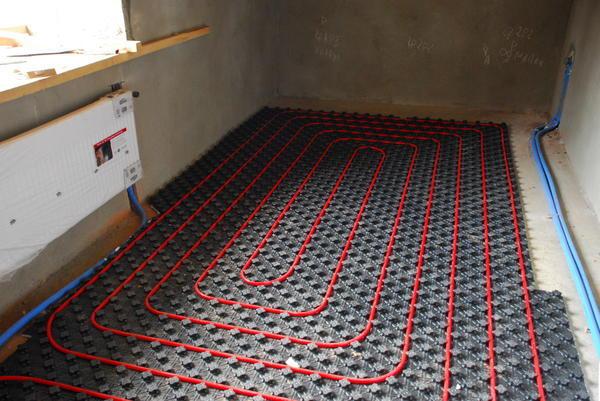
Of course, that the water ran in the right direction and was the right temperature, you will have to provide the system and the pump, and control equipment.
Pipes for water warm floor — it is almost the same as the cable for electric. In the working set comprises:

In Underfloor heating systems use PVC, polybutene and polyethylene pipes. All they are impermeable to oxygen, and it reduces corrosion of the heating equipment in particular boilers.
Pipes are supplied in coils length of 50 to several hundred meters. Due to this length of pipe is laid a single loop, without any connections. There are several styling options working loops: the snake, double snake, spiral and spiral with an offset center.
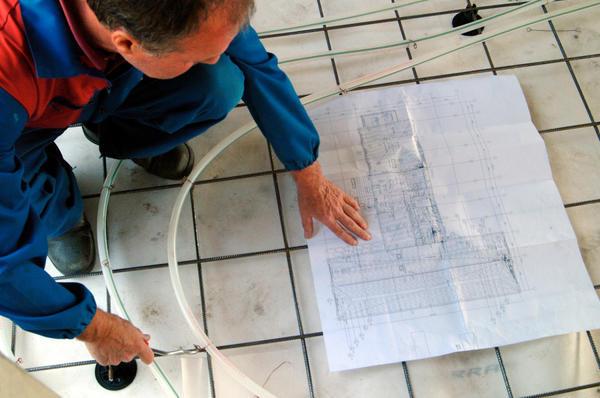
The step of laying the heating pipes must not exceed 30 cm, otherwise it may happen "thermal Zebra" — the uneven heating of the floor with alternating warm and cold bands.
The flow of warm water controls thermostatic control valves. It is installed in front of the collectors to the supply line.
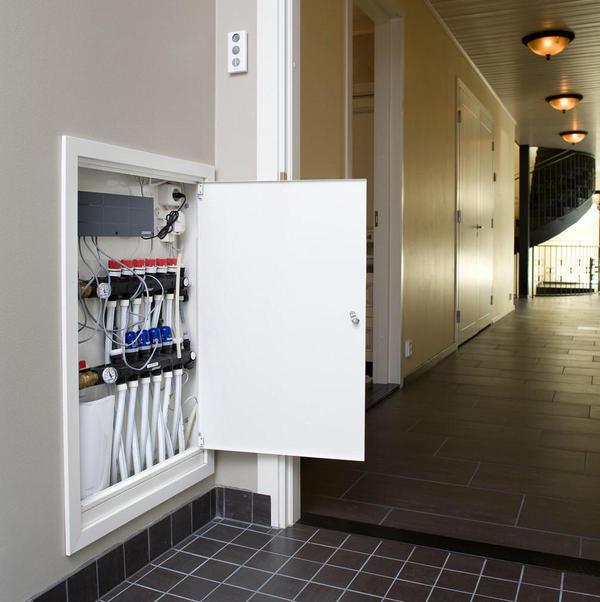
Thermostats are installed in distribution manifolds, responsible for the local temperature adjustment in the hinges.
The "heart" of the entire system — the circulation pump. Together with thermostatic valves, it forms a mixing unit.
You should know that the water scheme is only possible in heating circuits with forced circulation. This is because the water temperature from the boiler is quite high, and in the underground pipe to direct the water at a relatively low temperature. What should I do? — Arrange the mixing unit and install an additional pump. In the construction market are sold mixing units prepared the original equipment. In General, the installation of such a system in the country is nothing difficult for a person with equipment. Cottagers without special knowledge and skills, I would advise to use the services of specialists.
For energy efficient heating of country houses are increasingly used heat pumps. More about them is a different story. These amazing energy saving devices serves the heating network water temperature of about 35 °C. Above — I can't. It is their distinguishing characteristic. Of course, this is not enough for the usual radiators, "sharpened" under the higher temperature of the coolant. This leads to the logical conclusion: when using heat pumps it is advisable to apply water-heated floors. They are designed to work in tandem with each other.
Is it possible to compare the electric and water system price exploitation?
If in the first variant it is easy to calculate the rpm drive household electricity, when a water system it all depends on what fuel it uses:
3. Combined version of a warm floor , This scheme is not widely used, but also has a place (often as interesting findings of the domestic DIY). For heat carrier (water) used here is electricity (heating elements), but otherwise it's the same system of water floor heating. I am convinced that such a scheme can be successfully used in detached buildings such as garages.
The nuances of installation,Durability and reliability floor heating depend not only on components but also on the quality of the concrete screed. Because it becomes an organic component of the whole system, radiant screen. Concrete accumulates and transmits heat from the cables or pipes in the room. Cement is traditionally used cement-sand mortar or sand concrete.
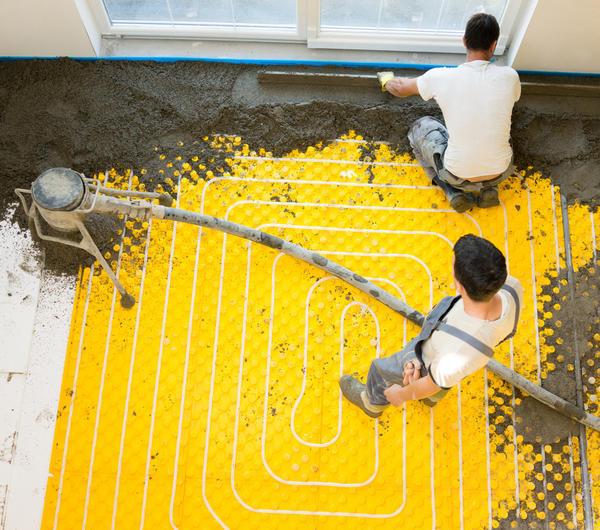
In the sale is specially designed for this purpose, dry blend low linear extension when heated.
The thickness of the screed below the cable shall be not less than 30 mm, otherwise the layer will be fragile. Concrete does not like delicate designs and warm floor is no exception. When correct thickness of the screed spreads the heat over the entire area uniformly, without the formation of "thermal Zebra".

For water floor screed thickness must be at least 50 mm. Added to the mixture of the plasticizer can reduce it to 30 mm.
To reduce heat loss, and thus heating costs, — experts advise to lay on the rough floor a layer of insulation that prevents shrinkage temperature. Really, why waste the heat of the underground space?
The next step is laying teplovidelyaushaya screen (aluminum foil) which will provide uniform heat distribution throughout the floor and will not allow the heating component to push into the insulation layer.
Below the layer of concrete is firmly connected with the base during casting, it is recommended to leave it as a small through hole. Along the way, they accelerate the drying of the coating. Known cases when too hasty users included a "crude" system of a warm floor in the hope that soon then the concrete hardens. This is a gross technological error! The concrete needs to gain strength on their own. To receive 50% of the strength of concrete requires at least 28 days.
Another thing is to verify the integrity of the cable. You can do this at 3-4 days after laying, including briefly heating the floor. A better (and more competent) to make it a tester. However, not every owner of the garden he has on the farm.
There are more simple options of floor heating. For example, to create without ties is used a "warm Mat".
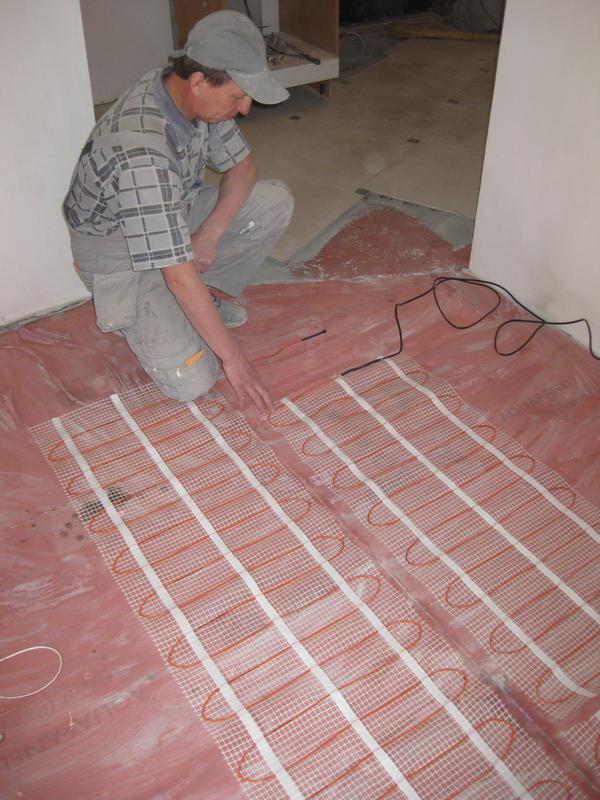
In this scheme, the heating cable is already attached to a plastic grid with a given step and is designed for installation in a given area. If you need to heat the room more, use several heating sections. These mats are perfectly suited for country bathrooms and kitchens.
If the flooring is ceramic tile, the thickness of the floor at the "matte" technology will increase by only 0.5-1.0 cm.
In conclusion,a Warm floor under your feet is real, it is the comfort available today. Moreover, it is widely used for heating not only living rooms but also enclosed terraces or porches, and greenhouses.
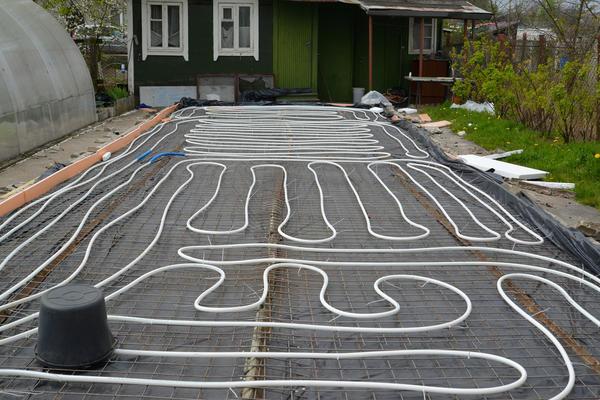
However, in a country house, this method of heating should be regarded not as a primary and as an auxiliary. Before you decide on it, we should all count and be sure that your cottage has the energy reserves to use.
For example, the electric field will require a few extra kilowatts of power. In the case of using water floors significantly increase the load on the boiler equipment. The use of the above-considered systems engineering requires a balanced, thoughtful approach and fair execution. And then you will always have "warm feet". published
P. S. And remember, only by changing their consumption — together we change the world! © Join us at Facebook , Vkontakte, Odnoklassniki
Source: www.7dach.ru
- not occupy useful space,
- invisible
- silent,
- does not create drafts,
- electricity and fireproof,
- provides a comfortable temperature (+24 °C...26 °C at the feet and +20 °C...+22 °C at head level).

Overall this is a good solution for a country house. Let's look into its kinds and characteristics.
Why the need for a warm floor? In Russia in the discussion of different life issues taken to find out how these problems are solved in the West. Let we me turn to the highly developed parts of the Western world — Scandinavia, whose climate on the severity close to our. The Swedes, Finns and Norwegians almost half of houses under construction equip btraditional systems radiant heating (which is floor). But the Scandinavians do not suspect of the tendency to splurge, especially when it comes to energy and the cost of it.
Underfloor heating can be both auxiliary and main heating system. They are indispensable when you have to "compromise" with the batteries in the arrangement of furniture — for example, if the heating "harmony" does not put the city planned to place a wardrobe or a bed. In the kitchen they keep the flooring dry, saving it from excessive moisture, which leads to the formation of bacteria and mold. The same can be said of the bathroom with toilet, and entrance hall, where in rainy weather is wet from shoes and umbrellas.
A serious trump card Underfloor heating — previously unknown in suburban homes comfort level when around the house you can walk around barefoot without fear of catching cold.
What kind of parents would abandon a guaranteed peace of mind for their child that slaps around the house without socks and not sniffles then?
As the floor gets warm? Underfloor heating can be of three types:
electric, water, mix (this type is less common, and to consider it in detail we won't). 1. Electric floor heatingthe Main components of an electric version of the heating cable and thermostat control. The cable is mounted in cement-sand screed or directly beneath the floor tiles (or other coating).

Thus, the entire array of sex turns into a radiant heater with a pleasant foot temperature by 2-3 °C above air temperature. It should be noted that the air is not too dry.
So, in the electrical circuit of Underfloor heating include:
- the heating section of the cable,
- control equipment (thermostat with temperature sensor),
- fasteners (mounting tape, corrugated plastic tube)
- insulation.
Required element this heating thermostat with floor temperature sensor. After all, one of the major advantages of electricity in the ease of regulation. And warm electric floors, this opportunity is fully used.

Here can be used as non-programmable thermostats, in which the desired temperature is set manually (in steps or continuously), and programmable, supporting and regulating it according to a given algorithm.
Devices of the latter type, it is reasonable to apply as time in country houses and cottages, where reside temporarily or where they go periodically.
The design of this floor is quite simple, and efficiently collect it can even a layman.
2. The device of water warm floor
In this case, the heat source is the heated water. She gives the heat, passing through the laid on a floor screed pipes.

Of course, that the water ran in the right direction and was the right temperature, you will have to provide the system and the pump, and control equipment.
Pipes for water warm floor — it is almost the same as the cable for electric. In the working set comprises:
- pipe
- insulation,
- mounting materials
- components for the device of expansion joints
- manifold with fittings for connecting pipes to the heating system.

In Underfloor heating systems use PVC, polybutene and polyethylene pipes. All they are impermeable to oxygen, and it reduces corrosion of the heating equipment in particular boilers.
Pipes are supplied in coils length of 50 to several hundred meters. Due to this length of pipe is laid a single loop, without any connections. There are several styling options working loops: the snake, double snake, spiral and spiral with an offset center.

The step of laying the heating pipes must not exceed 30 cm, otherwise it may happen "thermal Zebra" — the uneven heating of the floor with alternating warm and cold bands.
The flow of warm water controls thermostatic control valves. It is installed in front of the collectors to the supply line.

Thermostats are installed in distribution manifolds, responsible for the local temperature adjustment in the hinges.
The "heart" of the entire system — the circulation pump. Together with thermostatic valves, it forms a mixing unit.
You should know that the water scheme is only possible in heating circuits with forced circulation. This is because the water temperature from the boiler is quite high, and in the underground pipe to direct the water at a relatively low temperature. What should I do? — Arrange the mixing unit and install an additional pump. In the construction market are sold mixing units prepared the original equipment. In General, the installation of such a system in the country is nothing difficult for a person with equipment. Cottagers without special knowledge and skills, I would advise to use the services of specialists.
For energy efficient heating of country houses are increasingly used heat pumps. More about them is a different story. These amazing energy saving devices serves the heating network water temperature of about 35 °C. Above — I can't. It is their distinguishing characteristic. Of course, this is not enough for the usual radiators, "sharpened" under the higher temperature of the coolant. This leads to the logical conclusion: when using heat pumps it is advisable to apply water-heated floors. They are designed to work in tandem with each other.
Is it possible to compare the electric and water system price exploitation?
If in the first variant it is easy to calculate the rpm drive household electricity, when a water system it all depends on what fuel it uses:
- In the case of boilers operating cost of both systems will be almost identical.
- If heated water is used the boiler to the main gas, such a system would be cheaper.
3. Combined version of a warm floor , This scheme is not widely used, but also has a place (often as interesting findings of the domestic DIY). For heat carrier (water) used here is electricity (heating elements), but otherwise it's the same system of water floor heating. I am convinced that such a scheme can be successfully used in detached buildings such as garages.
The nuances of installation,Durability and reliability floor heating depend not only on components but also on the quality of the concrete screed. Because it becomes an organic component of the whole system, radiant screen. Concrete accumulates and transmits heat from the cables or pipes in the room. Cement is traditionally used cement-sand mortar or sand concrete.

In the sale is specially designed for this purpose, dry blend low linear extension when heated.
The thickness of the screed below the cable shall be not less than 30 mm, otherwise the layer will be fragile. Concrete does not like delicate designs and warm floor is no exception. When correct thickness of the screed spreads the heat over the entire area uniformly, without the formation of "thermal Zebra".

For water floor screed thickness must be at least 50 mm. Added to the mixture of the plasticizer can reduce it to 30 mm.
To reduce heat loss, and thus heating costs, — experts advise to lay on the rough floor a layer of insulation that prevents shrinkage temperature. Really, why waste the heat of the underground space?
The next step is laying teplovidelyaushaya screen (aluminum foil) which will provide uniform heat distribution throughout the floor and will not allow the heating component to push into the insulation layer.
Below the layer of concrete is firmly connected with the base during casting, it is recommended to leave it as a small through hole. Along the way, they accelerate the drying of the coating. Known cases when too hasty users included a "crude" system of a warm floor in the hope that soon then the concrete hardens. This is a gross technological error! The concrete needs to gain strength on their own. To receive 50% of the strength of concrete requires at least 28 days.
Another thing is to verify the integrity of the cable. You can do this at 3-4 days after laying, including briefly heating the floor. A better (and more competent) to make it a tester. However, not every owner of the garden he has on the farm.
There are more simple options of floor heating. For example, to create without ties is used a "warm Mat".

In this scheme, the heating cable is already attached to a plastic grid with a given step and is designed for installation in a given area. If you need to heat the room more, use several heating sections. These mats are perfectly suited for country bathrooms and kitchens.
If the flooring is ceramic tile, the thickness of the floor at the "matte" technology will increase by only 0.5-1.0 cm.
In conclusion,a Warm floor under your feet is real, it is the comfort available today. Moreover, it is widely used for heating not only living rooms but also enclosed terraces or porches, and greenhouses.

However, in a country house, this method of heating should be regarded not as a primary and as an auxiliary. Before you decide on it, we should all count and be sure that your cottage has the energy reserves to use.
For example, the electric field will require a few extra kilowatts of power. In the case of using water floors significantly increase the load on the boiler equipment. The use of the above-considered systems engineering requires a balanced, thoughtful approach and fair execution. And then you will always have "warm feet". published
P. S. And remember, only by changing their consumption — together we change the world! © Join us at Facebook , Vkontakte, Odnoklassniki
Source: www.7dach.ru
"The earth will turn into a huge brain". As Nikola Tesla predicted our world
Green smoothie: Kale, spinach, and avocado — a great start to the day!
